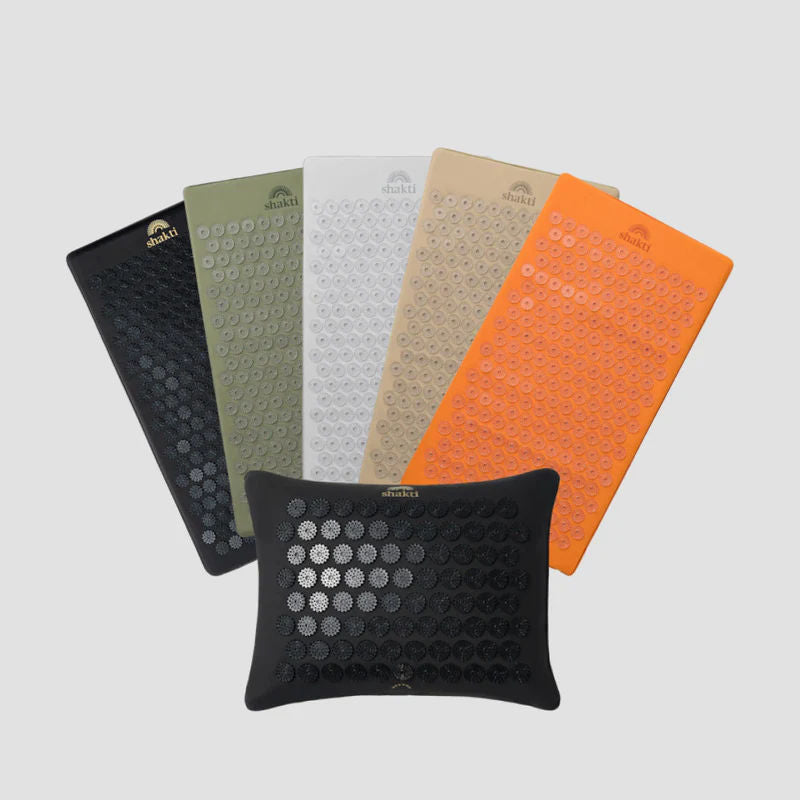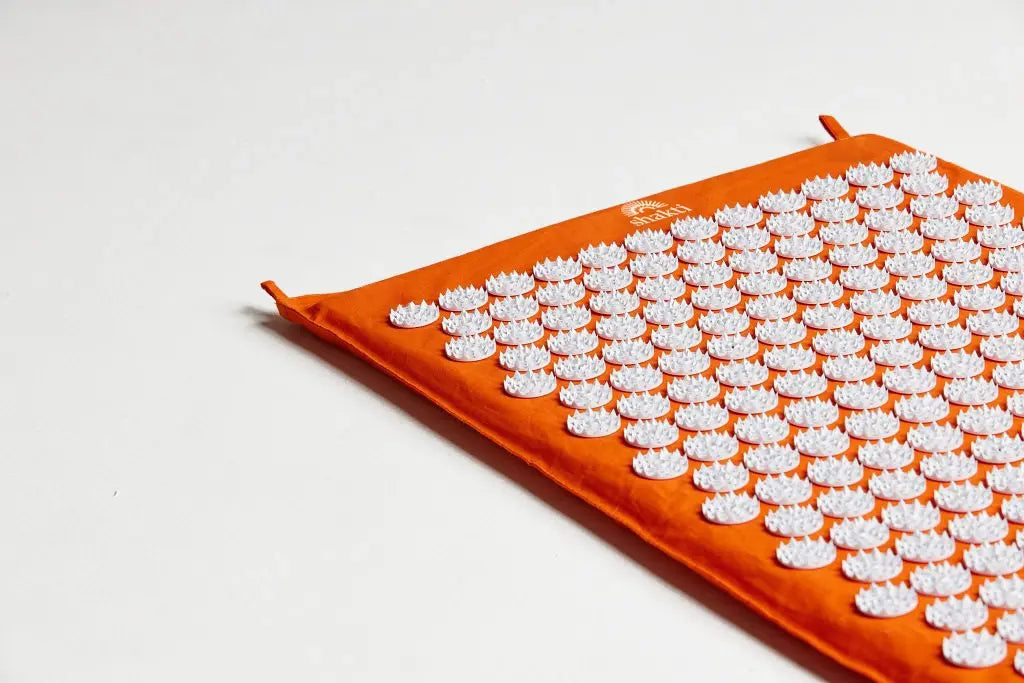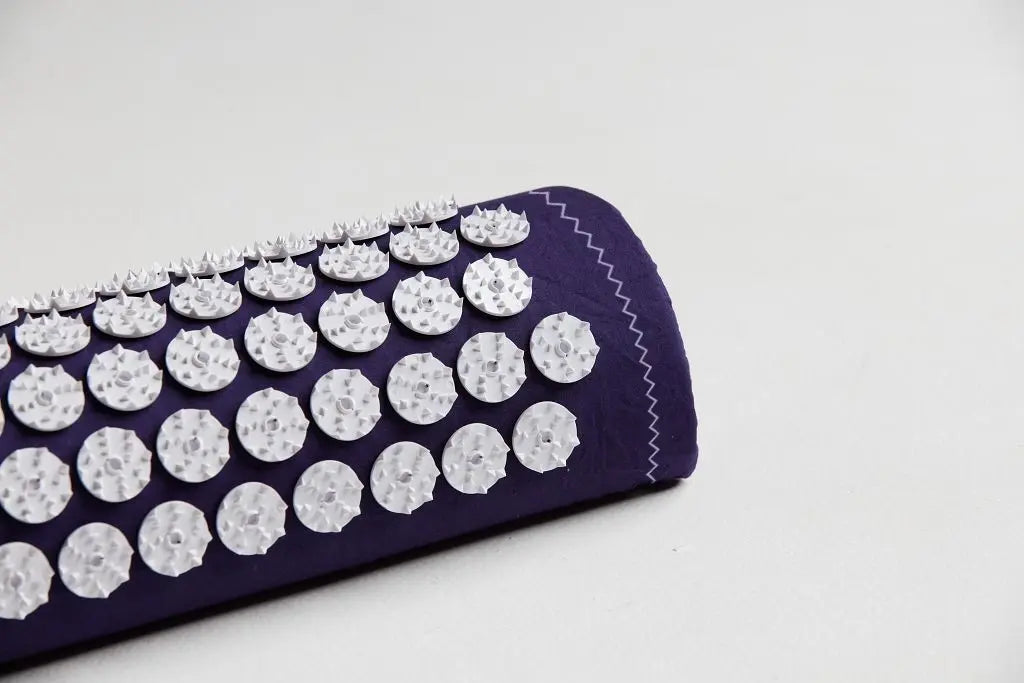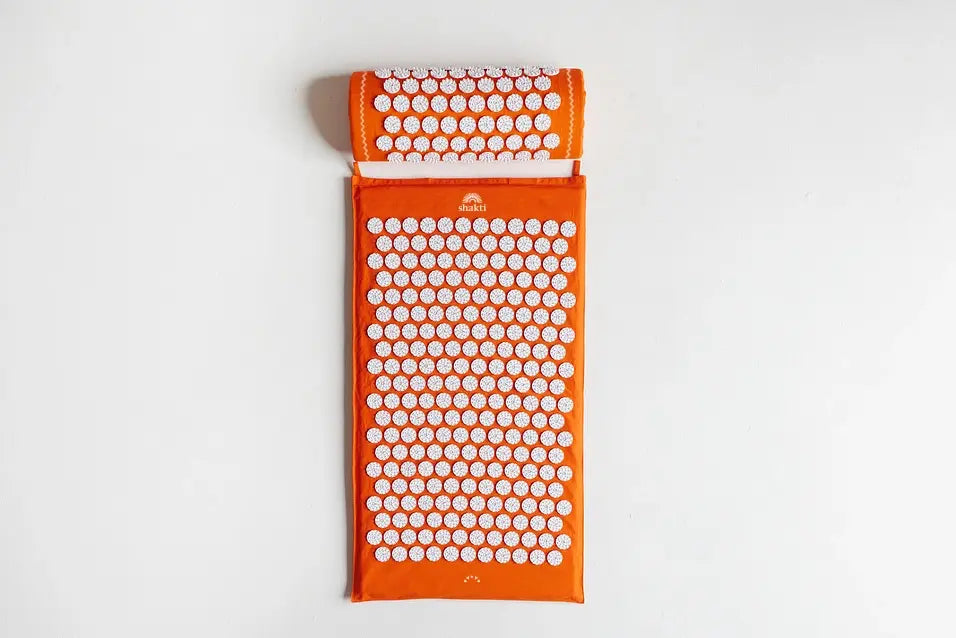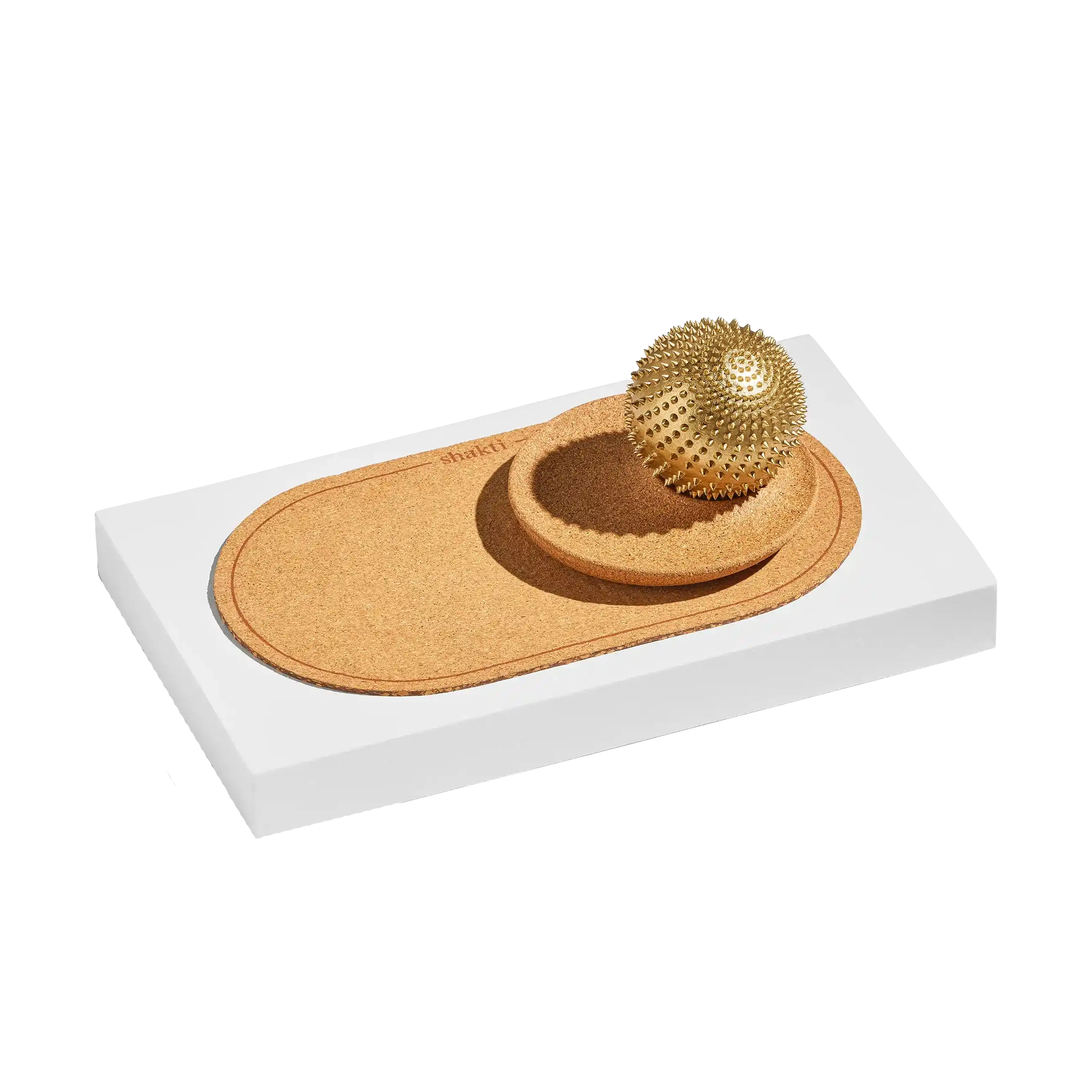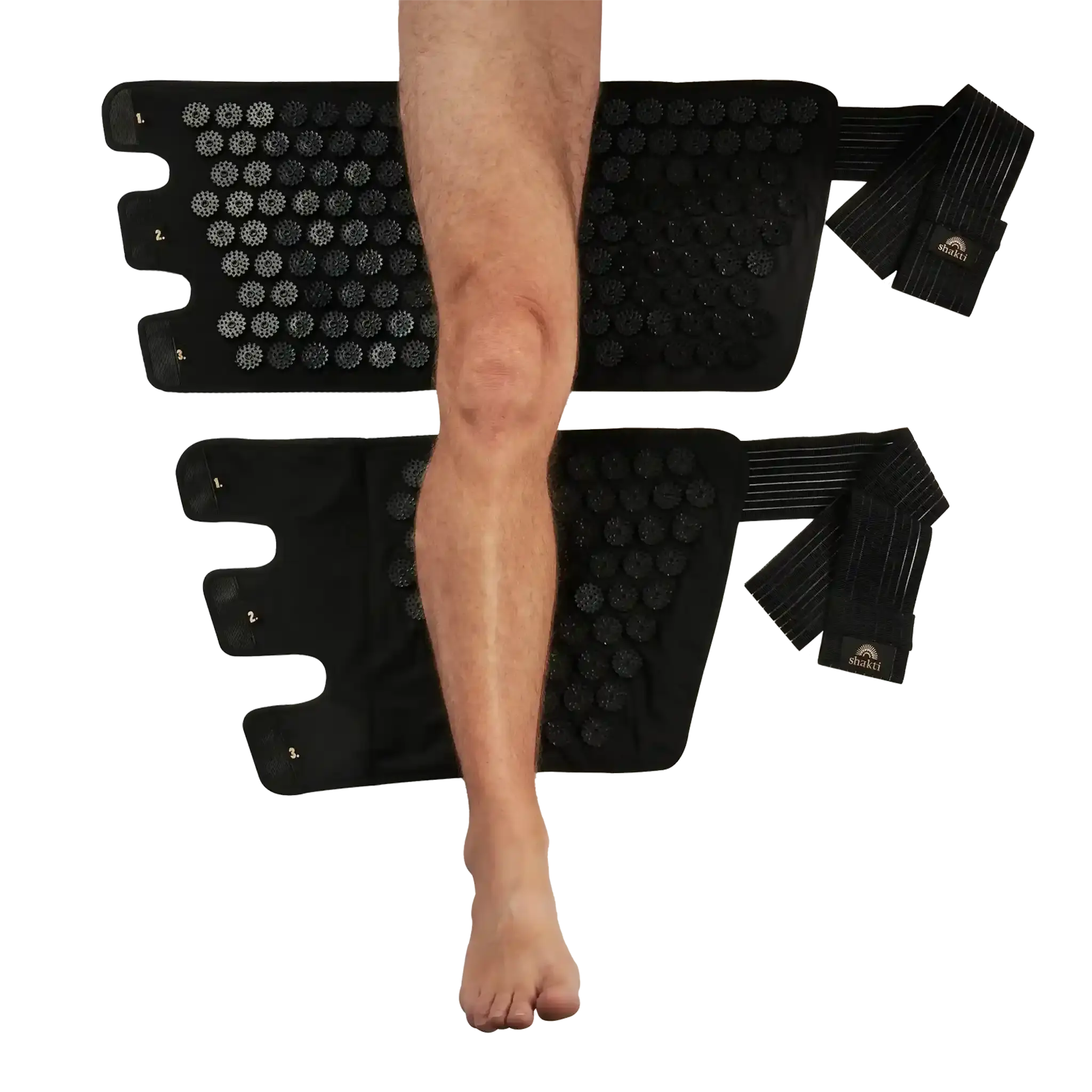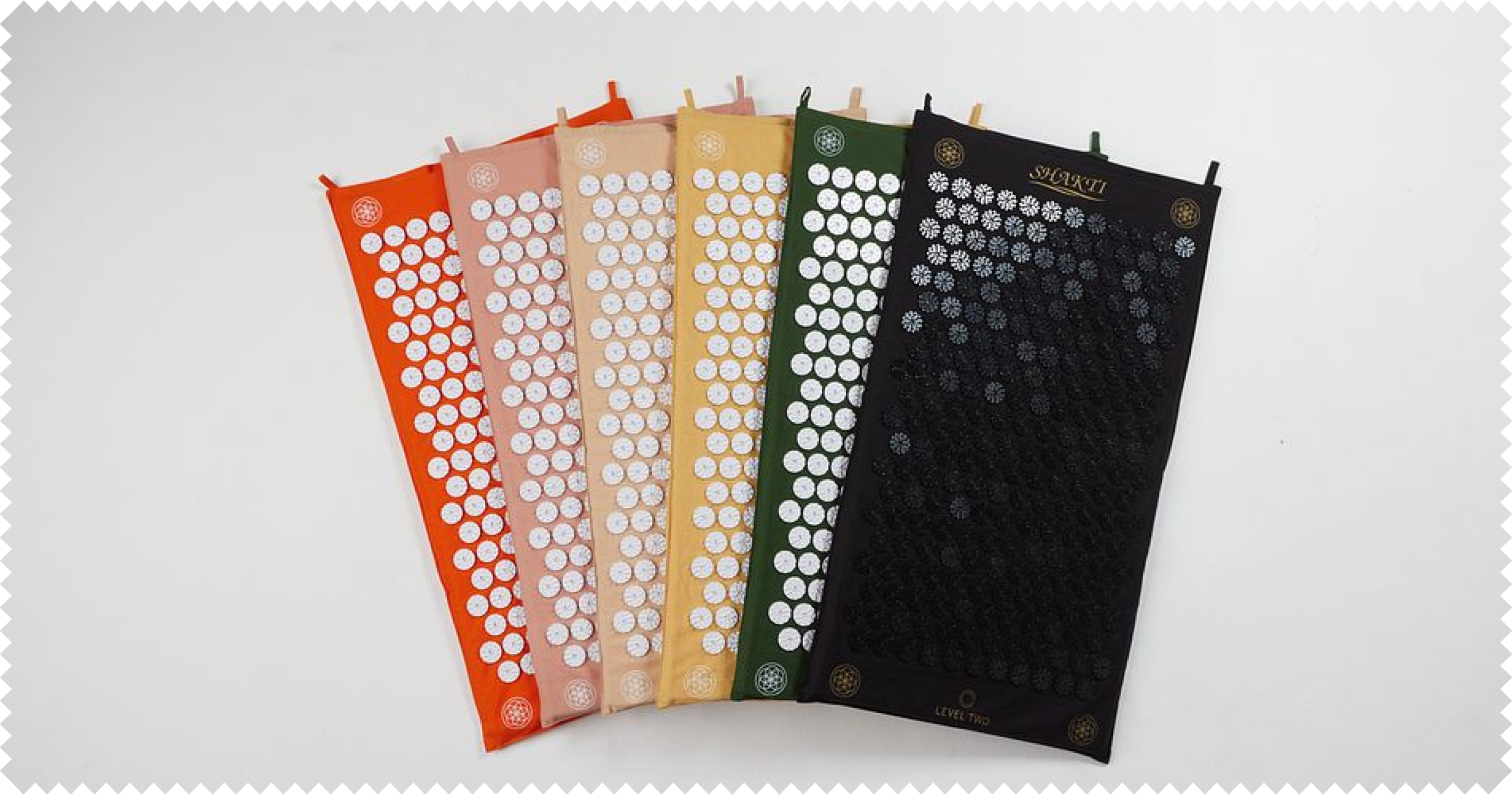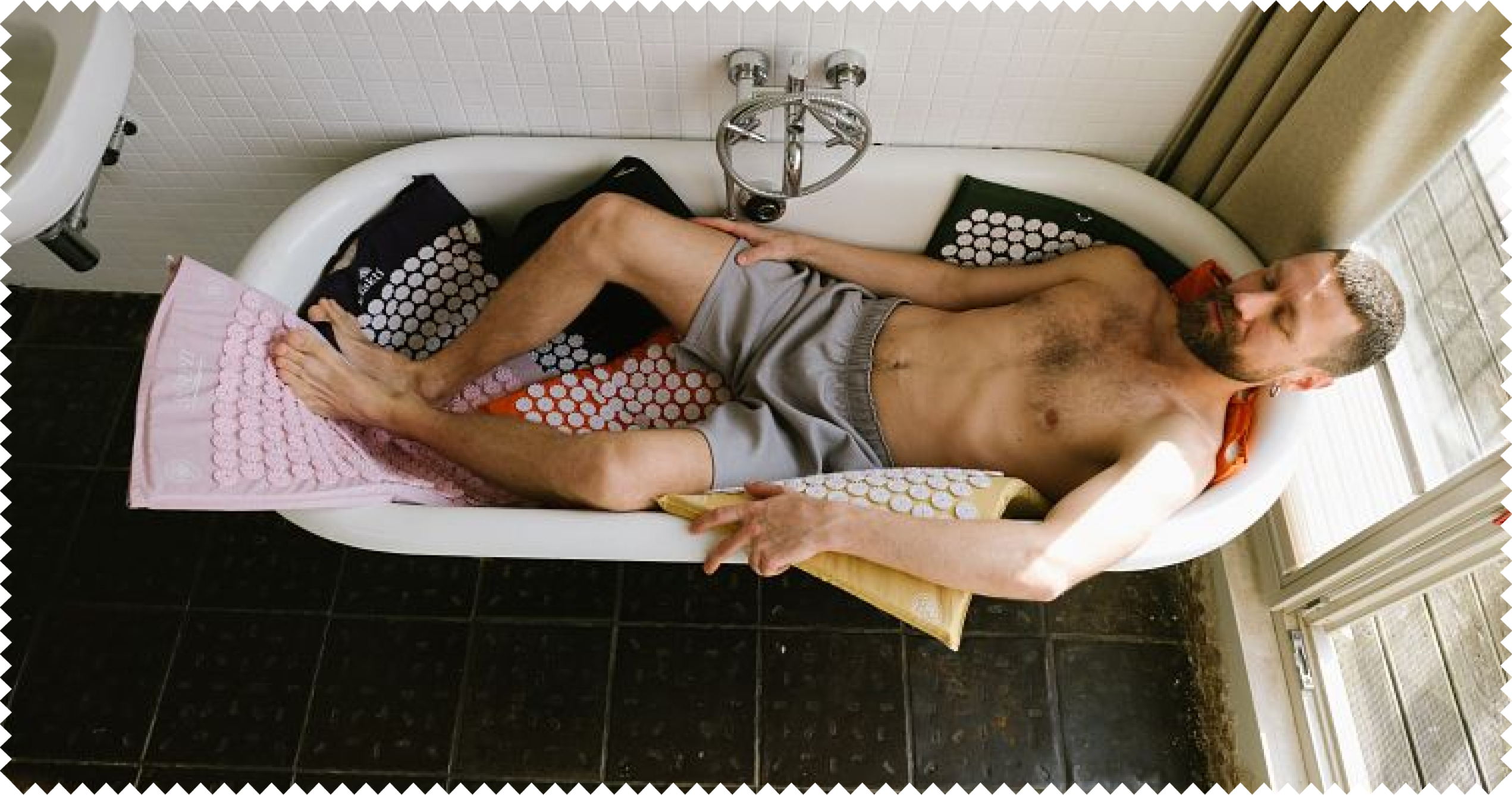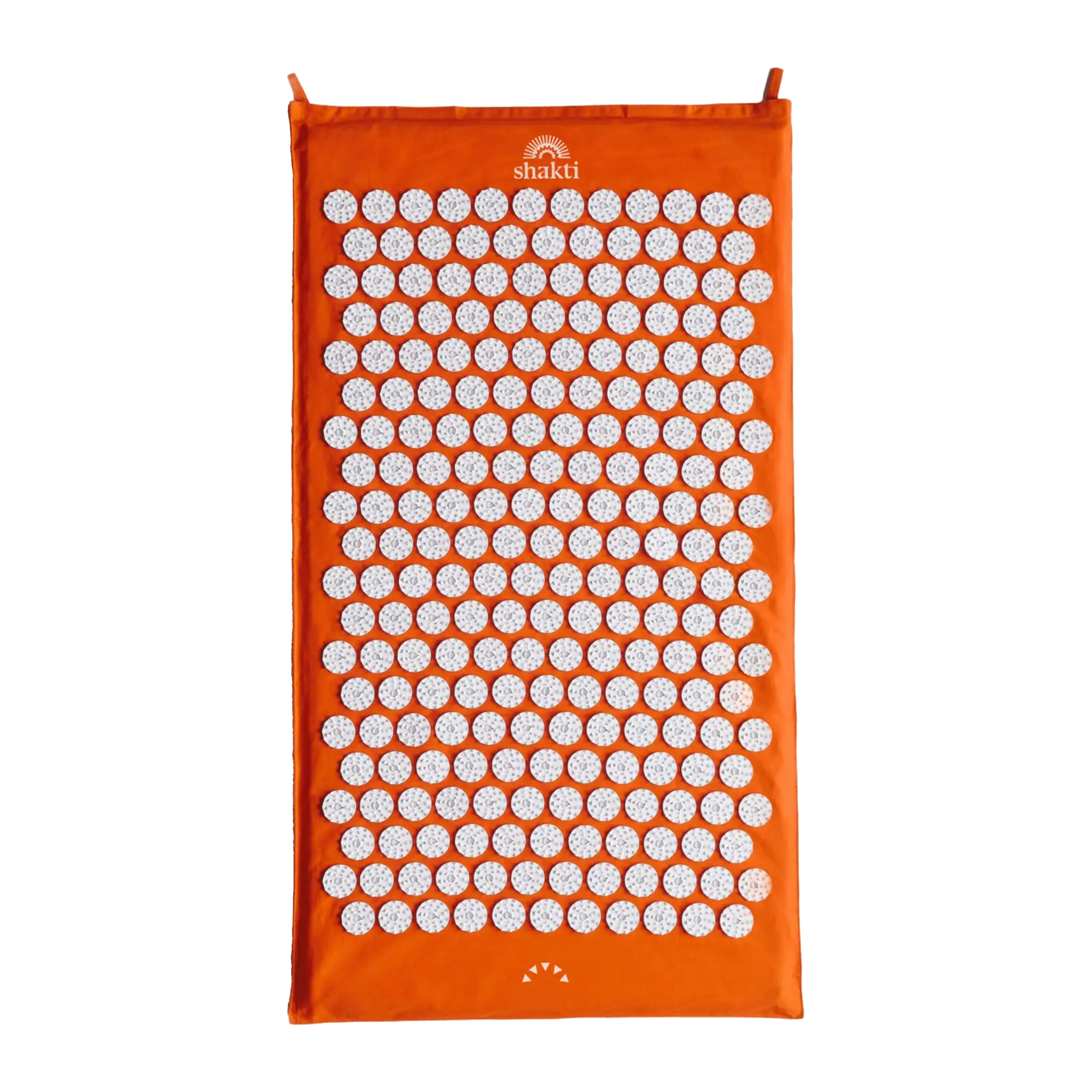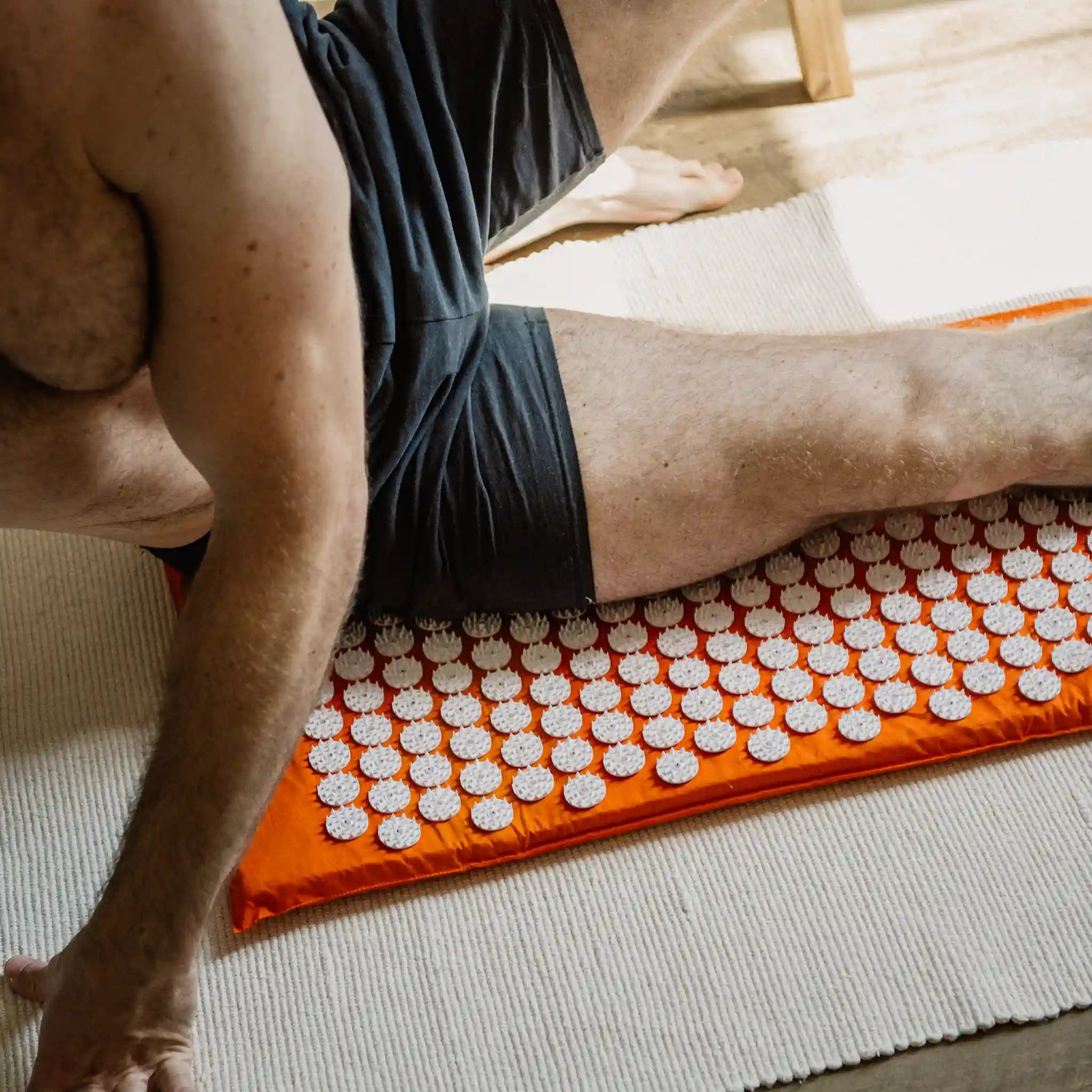Why New Year's resolutions don't always make you happy
Or: How to start the new year relaxed and grateful with acupressure
What's the deal with these New Year's resolutions? Every year we analyze what went wrong last year and set ourselves new goals. Faster, better, more beautiful. The main thing is to identify the "problem" and find a quick solution. Unfortunately, this often does not make us happier, but on the contrary, even sadder.
It's no secret that New Year's resolutions build up pressure. Anyone who has ever written a New Year's to-do list knows that most of them are thrown overboard by the end of January anyway. No wonder a British psychologist found out that January 24 is the saddest day of the year. All the carefully set goals start to wobble and you're not quite as top motivated to go to the gym as you were at the beginning of the year. The fact that many people are sad in January is also confirmed by a recent study by the DAK. Thus, in January, most people with the diagnosis of depression report sick, about 10 percent. The lowest level of sickness registrations with this diagnosis is reached in December. We seem to go through many different emotional states in these two months in particular. The result of the January low can be psychological and mental states such as sadness, burnout or being overwhelmed. But, and this is the good news, there is another way!
That's why we've taken the new year as an opportunity to get to the bottom of the phenomenon of New Year's resolutions and find out why we like to torture ourselves with them. And because it's much nicer to focus on solutions instead of problems, we'll also show you here how you can use acupressure to prevent mental bottlenecks, support the healing process and treat yourself naturally. Of course, it should be said that acupressure cannot replace professional psychotherapy and a visit to the doctor is always advisable if you are not feeling well psychologically.
But let's start from the beginning: Why do we like to make resolutions so much?
To be able to answer this question well, we got help from a professional. Katarina Stoltz is a life coach from Berlin and studies Gestalt therapy on the side. In her day-to-day work, she helps many people set goals and achieve them. If anyone should know about good resolutions, it's her, we thought. So we asked her for an interview and lo and behold, she was there to answer all our questions about resolutions.
The very first thing we wanted to know from Katarina is why we strive every year to do something better than the year before. Where does this self-improvement mania come from?
When we ask the question, we get an audible smile back. Apparently, this is a topic that the Gestalt therapy student has already experienced herself. She tells us that she used to make New Year's resolutions, but has been doing without them for a few years now because it puts her under pressure and often fails after only a short time.

This is mainly due to the way we set goals, says Katarina. Most of us look back at the past year, focus on all the things that went wrong for us, and note what we need to do better in the new year. We all know the popular resolutions to finally quit smoking, to do more for ourselves or to change the exhausting job. The problem is not the goal itself, but the way it is set. It's a reaction to an unfulfilled emotional state, Katarina says. In doing so, we don't look at habits and question where they may come from and why we keep falling into old patterns of behavior. Instead, we respond to an unmet need in our lives. This is like taking medicine for symptoms without looking at the real cause, she says.
Seeing the big picture instead of grasping for quick solutions
A popular and often heard resolution in the new year: weight reduction. Everything should be different in the new year. We want to eat healthier and go to the gym at least 3 times a week. At the beginning of January we are still fully motivated and start the year with green smoothies and lots of sports. Unfortunately, however, often by the end of the month the old behavior patterns and habits creep back in and we lose sight of our goal. As a result, we feel worse than before because we haven't changed anything about the unpleasant situation.
Katarina calls this approach "quick fixes." She explains that while we try to stop the symptoms, we don't get to the root of the dissatisfaction. Instead, we should look at the big picture, do some soul-searching and ask ourselves what we want to achieve in the long run and why exactly that is so important to us. For example, do we want to lose weight in order to feel better and healthier, or does this desire stem from an ideal of having to be slim in order to be recognized and loved?
Step by step: Achieve your goal more easily in many small steps
Katarina also tells us that, in her practice as a life coach, she often finds that some people would literally work through a compulsory catalog. They set themselves too many goals and try to chase them every day. This is challenging and can lead to excessive demands or worries in the long term. Women in particular often suffer from the pressure of having to juggle everything: Raising children, household and the job. They strive to be the perfect employee at work and the perfect wife and mother at home. Excessive demands are inevitable. They often fear that they are not good enough and compensate by being constantly busy. Consequences of this overload can be sleep disorders, high blood pressure or burnout.
As a solution, Katarina tells us that we should think in small steps instead of focusing on "quick fixes." In this way, you can set yourself a long-term goal that is important to you and break it down into many small interim goals over the course of the year, always keeping your eyes on the big picture. This helps to achieve success more quickly and motivates people to keep at it instead of giving up. A visionboard can be very helpful to fix your own visions and to be inspired again and again by what is important for you in the new year.
Prevention of difficult mental phases: Start the year relaxed with acupressure
Depression and other terms are and remain diagnoses. Before the doctor makes such diagnoses, we can sometimes identify feelings ourselves, such as being overwhelmed or worrying too much. Instead of controlling them or pushing them away, we can try to classify and understand these feelings. It is no secret that our emotions have a fundamental influence on how we feel physically and how well or badly we feel.
Traditional Chinese Medicine holds the belief that stress can interrupt the harmonious flow of our Qi, or life energy. Yet there are wonderful natural ways to help our Qi flow happily. The easiest way to interrupt stress and thus prevent difficult emotional phases is to build small breaks for acupressure time into your daily routine. This will allow you to purify your life energy and calm yourself down again and again.
Here we go: Stress Relieving Acupressure Points in the Head, Neck and Shoulders
If you're like the majority of people, stress also occurs in your neck and shoulders. On a physical level, this can lead to tension and headaches. The following acupressure points will help you relieve mental and emotional stress and get rid of the annoying physical side effects of tension.



(Illustrations from: Acupressure and Reflexology For Dummies by Bobbi Dempsey and Synthia Andrews).
A healthy routine to start the new year stress free
In the world of acupressure, there are great exercises that can help you anytime in your everyday life when things get too much.
- Sit on a chair and breathe into your belly to arrive.
- Wrap a towel around the back of your neck and begin to turn your head in complete circles. Do 3 times in one direction and 3 times in the other. Wherever it feels tight, you can stop and stretch for 20 seconds.
- Use your two index fingers and now press both sides of the point GB20 and GB21. If the point feels empty, press a little more, if the point feels full, release a little.
- Now simultaneously press both LV3 points
- Complete the exercise by pressing the point G24-25 between the eyebrows with loose tension for about 1-3 minutes.
- Relax and look inside yourself at what has changed in your body since the exercise.

Positive into the new year: Affirmations for a good start
More beautiful than strict resolutions are affirmations. These are positive beliefs that should accompany you every day. They are positive assumptions about yourself or your life that you wish for your future. They are always phrased in the present tense and as if what you want has already come to pass. You can support your acupressure routine with positive affirmations by reciting your personal affirmations to yourself over and over during the exercises.
Possible affirmations can be:
- I love and accept myself as I am.
- I deserve boundless love.
- I don't have to be perfect.
- I trust myself.
- I am protected.
You can either choose one of these affirmations or take a little more time and write down three affirmations that you wish for in your life. You can then recite these daily in the morning and in the evening, aloud or silently. You will notice that after some time these affirmations become beliefs that also anchor themselves in your subconscious.

Good conditions for mental health: a healthy diet
Good ingredients and herbs will help you feel good and go into your full energy. The following tips will help you cope better with mental bottlenecks and feel more stress-free overall.
Good herbs and roots: mint, ginger, fennel or turmeric are true healers. In Ayurvedic medicine, for example, the "golden milk" has been a magic anti-inflammatory remedy for centuries that strengthens the immune system and keeps you fit - especially through the winter. All you need is turmeric, ginger, nutmeg, cinnamon, coconut oil and plant milk. You can find the whole recipe at .
Avoid sugar: Try to eat high-quality sugars in the form of sweet potatoes, brown rice, carrots or apples. If you need to sweeten, use natural sugars like agave syrup.
Use spices: Cinnamon, garlic, onions and a small amount of cayenne pepper can reduce unnecessary moisture in your body and really boost your digestion, especially during stressful periods.
Avoid mucus-forming products: Dairy products, diets too high in protein combined with starch and hydrogenated oils can lead to sluggishness and troubling emotions.

Gratitude instead of resolutions: Your personal Shakti Mat routine for the new year
If you take a look around our Shakti page, there's a very good chance that you already own a Shakti Mat or would like to get one. To brave the new year full of positive feelings and start with gratitude, we have come up with a Shakti Mat routine for you that will almost certainly make you much happier soon. The magic word here, as so often, is gratitude. Because instead of just looking at what went wrong last year, we want to focus on what you did that was really great.
Lie, sit or stand on your Shakti Mat, depending on how you prefer to use the Shakti Mat.
- Close your eyes and breathe deeply in and out. Try to arrivedeep inside yourself andeverything you have experienced so far in the day or what may still come today.
- Now think very hard about one thing for which you are grateful today. It can be an upcoming event, a special person, or a quality about yourself.
- Try to feel the feeling of gratitudeand let it spread within you. You can use about 2-5 minutes for this.
- Now let the thought goand enjoy your further Shakti Mat practice.
If you incorporate this exercise into your daily Shakti Mat routine, you will soon be able to go through life much happier. As with all routines, the key here is: Keep at it! The longer you practice this exercise, the deeper the feeling of gratitude will become.
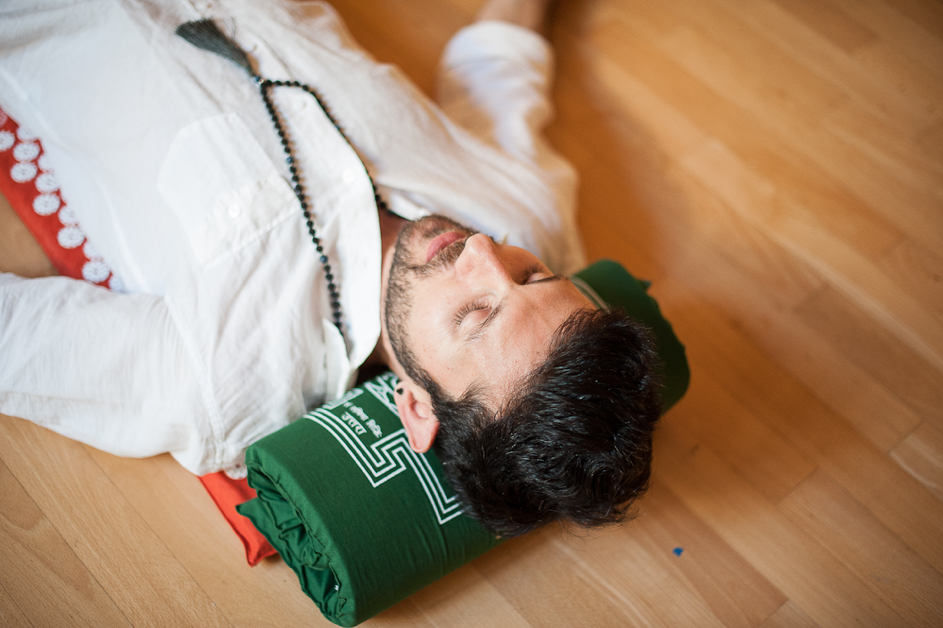
To take the feel-good experience to the next level in the new year, we've created a relaxing playlist for you that will have you really sinking into the tips of your Shati Mat. For a new year full of good feelings, gratitude and wonders in emotional balance. "When doubt arises, which it does over and over again, it becomes a signal that it is time to let go, rebalance and find an unconditional allowing of life."-Richard Moss, MD (The I That Is We)
If you would like to share with other back pain sufferers who use an acupressure mat to live in emotional balance, you can do so in the Acupressure Mat Facebook group.
We hope that with this lovingly researched and written article we can help you start the new year relaxed and into your full energy. If you have any feedback or questions about the article, please feel free to write to us here.
Sources for this article
- DAK study on depression in January:
- The recipe for your golden milk: https://www.veggi.es/goldene-milch/
- Acupressure and Reflexology For Dummies by Bobbi Dempsey and Synthia Andrews
- Acupressure for Emotional Healing by Michael Reed Gach, P.h.D. and Beth Ann Henning, Dipl. A.B.T.
Image sources:
- Little boy: https://unsplash.com/photos/lVCHfXn3VME (royalty free)
- Eat what makes you happy: https://unsplash.com/photos/ZA9PHAnVP5g (royalty-free)
- Acupressure points: Illustrations from: Acupressure and Reflexology For Dummies by Bobbi Dempsey and Synthia Andrews.


